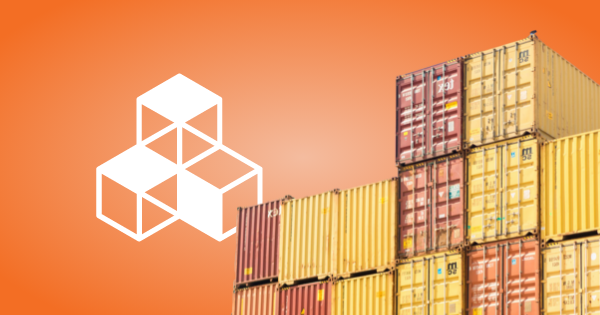Marketplaces turning towards sustainability: what does that mean?
Sustainability plays a huge role in shopping experiences these days. Shoppers expect businesses to implement practices that benefit people and the planet, working towards a more sustainable future. This demand is growing as consumer consciousness increases. Also, let’s not forget the effects of a global pandemic. Consumers are perhaps more eco-friendly now than they were before the pandemic, therefore are looking to buy products from environmentally responsible brands.
The pandemic = heightened social consciousness
When the pandemic knocked on our doors, many shoppers started to (and were eventually forced, due to regulations) fill their carts on digital marketplaces. As the situation worsened, consumers became more aware of the scarcity of natural resources and became more mindful of the impact of their overall consumption. This shift towards online shopping, combined with consumer consciousness, raised sustainability expectations to an all-time high. Consumers who shop online pay close attention to environmentally-friendly shipping options, packaging waste, and delivery and return management. They expect ethical social and environmental responsibility from brands, and they scrutinise so-called ‘green’ marketing. So much so, that they are willing to pay more for sustainable products in brick-and-mortar stores and on online marketplaces. There is clearly a sustainability megatrend. The question is: how is the sustainability trend taking shape on marketplaces?
Sustainability on the marketplace agenda
As sustainability rises on the agenda, marketplaces – varying from niche to generic – are becoming useful third-party solutions to change old habits, and build new sustainable behaviours. Various platforms aim to create a shopping experience that meets today’s expectations by setting new ground rules and incentives for the brands on their channels. Take Zalando. It only wants eco-friendly brands on its marketplace by 2023. Then there’s Amazon’s Climate Pledge Friendly stand-out badge – an initiative to highlight merchants that meet sustainability standards. While each marketplace has its own standards and sustainability goals, we’ve noticed some overarching characteristics.
An increase in marketplace-specific sustainability labels
The concept of sustainable and eco-friendly labels (like Fairtrade and FSC) have been around for a long time, creating the groundwork for more transparent supply chains in diverse industries. Labels are one of the easiest ways for consumers to identify a sustainable product, which explains its use on digital marketplaces as well.
Noticeably, marketplaces are not only incorporating already-existing sustainability labels in their practices, they are also creating their own labels with their own standards. This is partially due to the fact that third-party certifications have their own labelling rules, which prevent retailers from displaying these labels – unless the brand carries the same certification as its products. Also, marketplaces like Zalando understand that smaller brand partners struggle with the high costs and time required to obtain brand-level certifications. Instead, they use certified materials – e.g. a T-shirt made with GOTS organic cotton, but the brand is not certified to this standard. Using a marketplace-specific label shows the sustainability per product as well as the inclusion of smaller brands.
Scrutiny of ‘green’ practices
The advantage of having a marketplace-specific label is that brands can be held accountable by the platform, which avoids greenwashing. The fact that products are certified on a unit level instead of on a brand level means that consumers can be sure that the product that they are buying is actually green to some extent. To ensure and maintain this, marketplaces require brands to provide valid proof of their organic materials, social sustainability, and/or third-party certifications. These are, in turn, routinely and randomly revised. One example: Zalando conducts random checks for brands who claim to have a sustainable product. It is up to the brand to have the proper certification or proof of organic material at the moment of revision, in order to earn Zalando’s sustainability label(s).
Reduction in packaging waste Plastic packaging used in the e-commerce industry is projected to reach 4.5 billion pounds by 2025. As we saw in previous years, a significant amount will inevitably end up as plastic waste. Hence, it is safe to say: packaging waste reduction is a priority for marketplaces. Marketplaces from the likes of Amazon, Bol.com, Zalando and Etsy are all trying to minimise their environmental impact by reimagining ways to package products. A good example of this is Amazon’s initiative to cooperate with third-party certifications in the making of their own label. Part of the goal of their label, Compact by Design, is to reduce the amount of packaging used by incentivising brands to make efficient changes to the shape of their product, reduce the amount of material used to box the product, and making concentrated products in a way that the consumer has to buy less, but gets more. For instance, delivering concentrated cleaning products that the consumer can dilute with water at home instead of buying multiple bottles of diluted products.
Visibility (and conversion) as an incentive
Like businesses are aware of corporate social responsibility, marketplaces have also set their own sustainability goals. However, their goals are largely unattainable if the brands on the platform don’t cooperate with their ambitions. Therefore, marketplaces make it attractive for brands to engage with their sustainability initiatives. This is done through the promise of increased visibility and potential conversion. Bol.com, for instance, includes environmentally and/or socially responsible products in their sustainable gift store. There is also a filter and an expert review section (that appears on the product detail page), which specifically target people looking for environmentally-friendly products. These features benefit the consumer, the businesses, and the marketplace. While consumers get a product that fulfills their expectations, sustainability is what sells. So, highlighting sustainable products is part of the somewhat capitalistic compromise of the triple bottom line: people, planet and profit.
Emakina’s marketplace experts are here to help you so get in touch with them via marketplaces@emakina.nl




